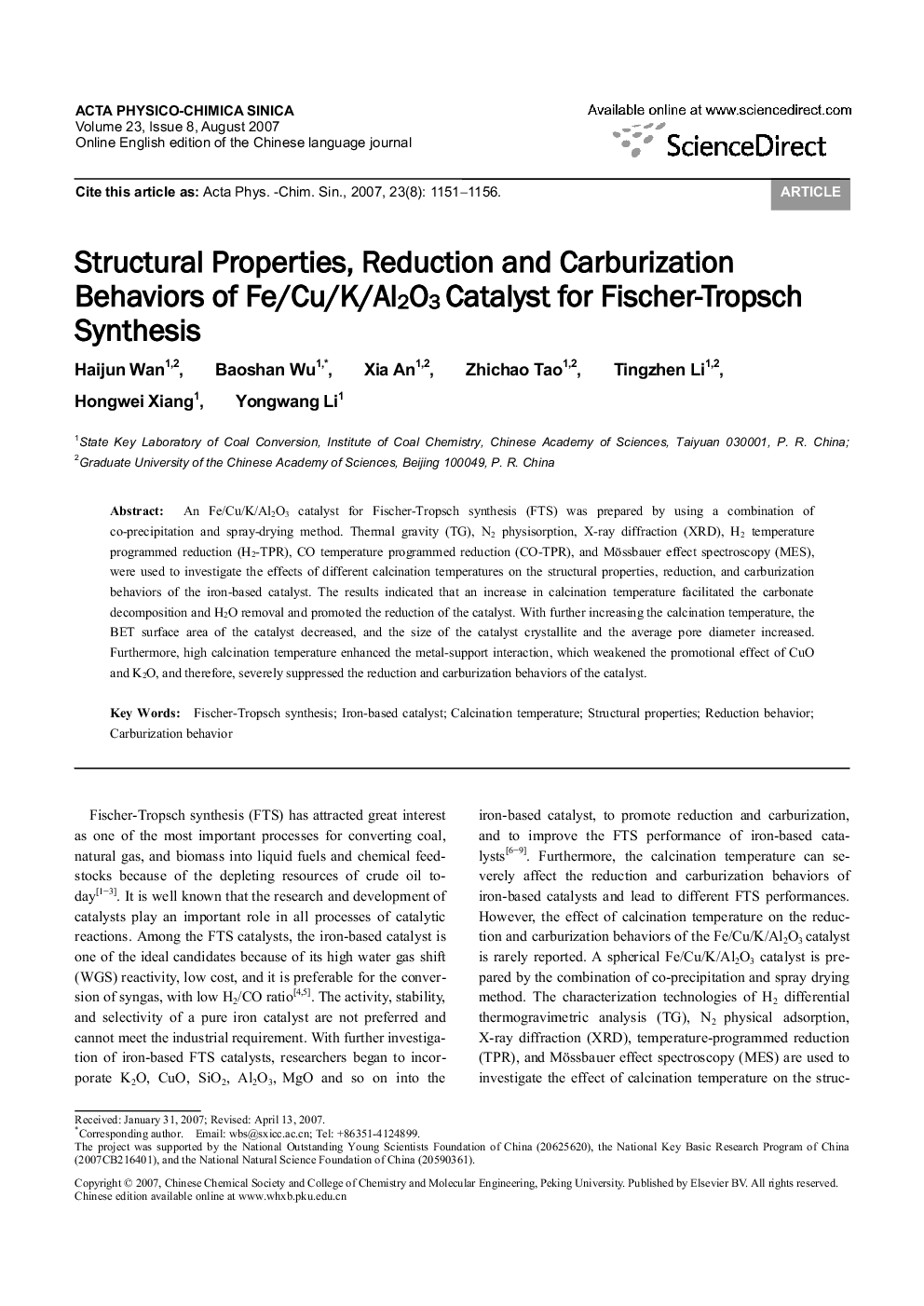| Article ID | Journal | Published Year | Pages | File Type |
|---|---|---|---|---|
| 7832055 | Acta Physico-Chimica Sinica | 2007 | 5 Pages |
Abstract
An Fe/Cu/K/Al2O3 catalyst for Fischer-Tropsch synthesis (FTS) was prepared by using a combination of co-precipitation and spray-drying method. Thermal gravity (TG), N2 physisorption, X-ray diffraction (XRD), H2 temperature programmed reduction (H2-TPR), CO temperature programmed reduction (CO-TPR), and Mössbauer effect spectroscopy (MES), were used to investigate the effects of different calcination temperatures on the structural properties, reduction, and carburization behaviors of the iron-based catalyst. The results indicated that an increase in calcination temperature facilitated the carbonate decomposition and H2O removal and promoted the reduction of the catalyst. With further increasing the calcination temperature, the BET surface area of the catalyst decreased, and the size of the catalyst crystallite and the average pore diameter increased. Furthermore, high calcination temperature enhanced the metal-support interaction, which weakened the promotional effect of CuO and K2O, and therefore, severely suppressed the reduction and carburization behaviors of the catalyst.
Keywords
Related Topics
Physical Sciences and Engineering
Chemistry
Physical and Theoretical Chemistry
Authors
Haijun Wan, Baoshan Wu, Xia An, Zhichao Tao, Tingzhen Li, Hongwei Xiang, Yongwang Li,
